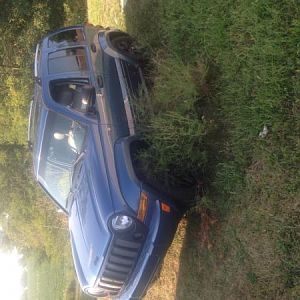typical mopar gas skids go up to about an inch of the mount points, as far as helping prevent debris punctures they go up higher than say, rustys tank skids. stock skids dont do a whole bunch in terms of significant rear impact anti-crush , but they're a layer between the ground and the plastic tank that prevents the ground from being the source of puncture to the tank when there's been enough rear deformation and damage to shove the tank area into the dirt. now a rustys or equiv. or better tank skid.. they'll shrug off a significant rear end collision with no deformation what so ever. but there's still that exposed portion of the tank , 4" or so in the rear near the undercarraige that isnt covered by 3/8"+ thick steel, lot of guys will leave the stock mopar skid on when they install aftermarket steel heavies just for that reason too. A piece of a honda civic grill that breaks off and turns into a harpoon can puncture the plastic gas tank in a wedge under rear collision, the mopar gas skids are actually excellent at protecting the tanks from that sort of damage, for that upper few inches of the tank, more so than the aftermarket heavy skids. just think of it as puncture resistance rather than crush proofing
ive never understood how any manufacturer lets a vehicle leave a factory with an exposed plastic tank , but im neither an automotive crash engineer nor a guy who is willing to save 5 or 6 dollars per vehicle at the manufacturing level at the expense of a few hundered per year that leaked and caught fire or endangered people after a minor collision resulting in no fatalities (fatality being the only way to actually get NHTSA to look at anything) otherwise, its an insurance issue, not a manufacturing issue
and having worked in crash rescue, dude, cars leak fuel from a puncture and catch fire 5-10 mins after a crash while they're being loaded on a roll back, ALL the F'ing time. as a result of pieces of plastic grill, sticks, etc










